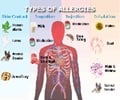There’s an urgent need for epidemiological studies to evaluate the recent increase in the rate of food allergy in Australia and its significant impact on the nation’s health resources
There’s an urgent need for epidemiological studies to evaluate the recent increase in the rate of food allergy in Australia and its significant impact on the nation’s health resources.
Associate Professor Raymond Mullins, a Canberra-based clinical immunology and allergy physician, said his practice has seen a 12-fold increase in demand for food allergy-related consultations with children aged under five over the 12 years to 2006.There’s been a seven-fold increase in consultations related to food-associated anaphylaxis over that time, and a “dramatic increase” in hospital admissions for anaphylaxis throughout Australia, particularly in young infants Assoc Prof Mullins said.
“While anxiety has probably contributed to service demand, the underlying prevalence of food allergy has also increased in Australian infants over the past decade,” Assoc Prof Mullins said.
“American and UK studies have also shown a 2-3 fold increase in peanut allergy in young children. So when parents and grandparents say that they never saw it in their day, they’re probably right” said Prof Mullins. “It’s important for people to realise that we’re not talking about tired or hyperactive kids, or a child with a snotty nose. That’s not allergy.
“We’re talking about proven allergic reactions soon after food, such as severe facial swelling and rashes, vomiting and in some cases, potentially dangerous difficulty breathing or collapse (anaphylaxis). Even when a reaction isn’t dangerous, it’s often frightening for those involved.
“There is an urgent need for coordinated systematic studies of the epidemiology of food allergy in Australia and abroad, to ascertain risk factors and guide public health policy.“There are important implications for public health, medical workforce planning, costs of care and the availability of public allergy services.”
Advertisement
Assoc Prof Mullins said that there are a number of long-term implications if widespread studies confirm there has actually been a big increase in the prevalence of food allergies.
Advertisement
Source-Eurekalert
JAY/S











